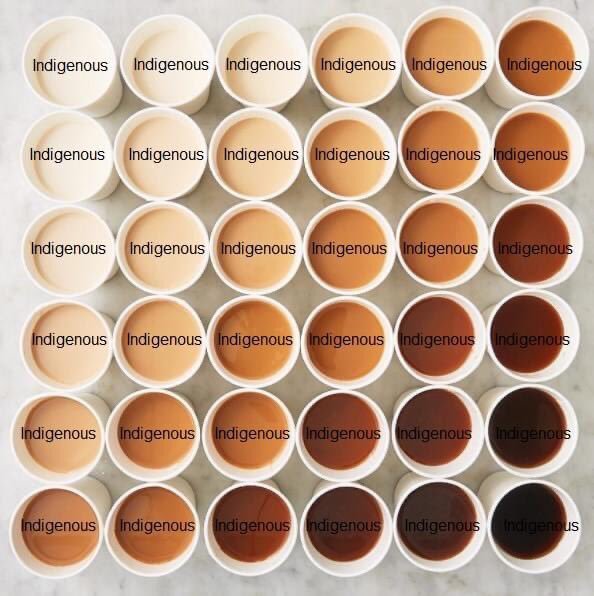Indigenous / Native American people come in all skin color shades. You can be Indigenous / Native American with any color shade. Indigenous / Native American heritage can come from the paternal side or the maternal side or both.
Taffy Abel’s Native American ‘taffy’ skin color was lighter and in the upper left quadrant. His paternal side heritage was European American and his maternal side heritage was Native American Ojibwe (Chippewa).
His lighter skin color allowed him to pass as a White to: 1. escape being sent to a Indian Residential Boarding School in 1905 and 2. to get entry into the 1924 WINTER OLYMPICS 3. to get entry in the Whites only NHL in 1926.
It was a matter of survival. To survive as an Indian in the early 1900s was difficult. It was a choice to Run - Hide - Pass.
In those racist times both African Americans and Native Americans used Racial Passing to escape discrimination.
Up to the 1950 census, how a person’s race was classified was often based entirely upon the perception of the enumerator. “If a different census taker comes to the door and they leave their paper bag at home, then maybe they’re Indian that year,” Shapiro said, referring to the idea that a person’s race could be determined based on whether their skin color was darker than a paper bag.
According to Shapiro, Native people often went underground to evade persecution. They would sometimes hide when census takers would come, Shapiro explained, changing their appearance, making strategic marriages, and employing other strategies to hide their indigeneity in the hopes they wouldn’t be exiled. This affected the accuracy and quality of the census counts.
It is believed that European representations of Native American people as violent date back to as early as 1591, when engraver Theodor DeBry engraved and published artist Jacques LeMoyne’s 1564-65 drawing of Indian scalping.
Furthermore, from the 17th to the 19th centuries, white observers portrayed Native Americans intent on “savage war” more violent than “civilized” combat of white European and American governments.
Wild West shows, performed across North America and Europe from the late 1800s into the 20th century, dramatized Native American attacks on stagecoaches and cabins as well as mock battles between cavalry and Indians.
William “Buffalo Bill” Cody and other white showmen drew huge audiences. These shows, and related influences, inspired white filmmakers to produce Westerns depicting hordes of Native Americans attacking white Euro-Americans.
As a matter of fact, many Native Americans were taken captive by white Euro-Americans, tortured, incarcerated, murdered, and expelled into slavery. And later into the infamous Indian Residential Boarding Schools who followed the principles of ‘Kill the Indian - Save the Man’.
Because white Euro-Americans colonists threatened Native Americans peoples, many resisted mightily to defend their families and homelands.

